3 Families From Different Cultures Share Their Thanksgiving Traditions
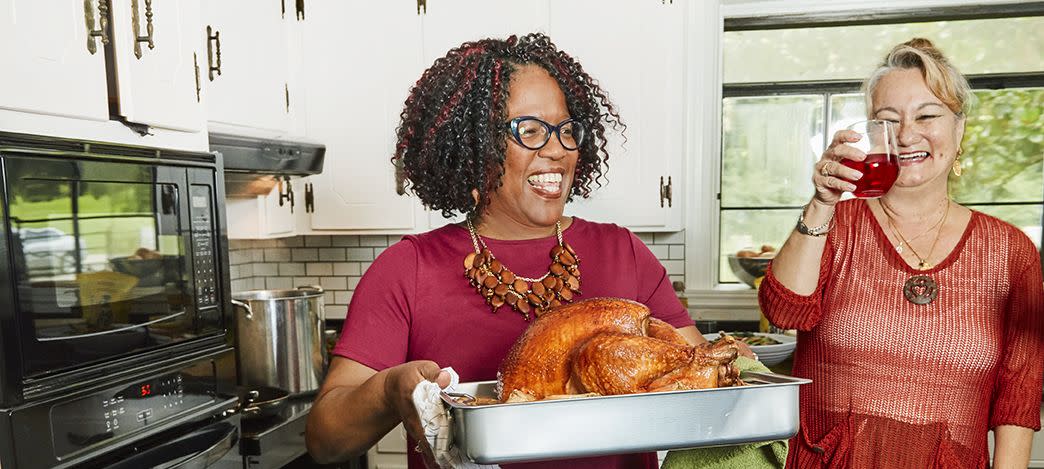
Pull up a chair and dig into three delicious stories of Thanksgiving. From pals who commune by candlelight to multicultural families bringing rich histories to the table, these tales of togetherness are as American as pumpkin pie.
This Korean American Military Family Makes Their Own Customs (and Kimchi)
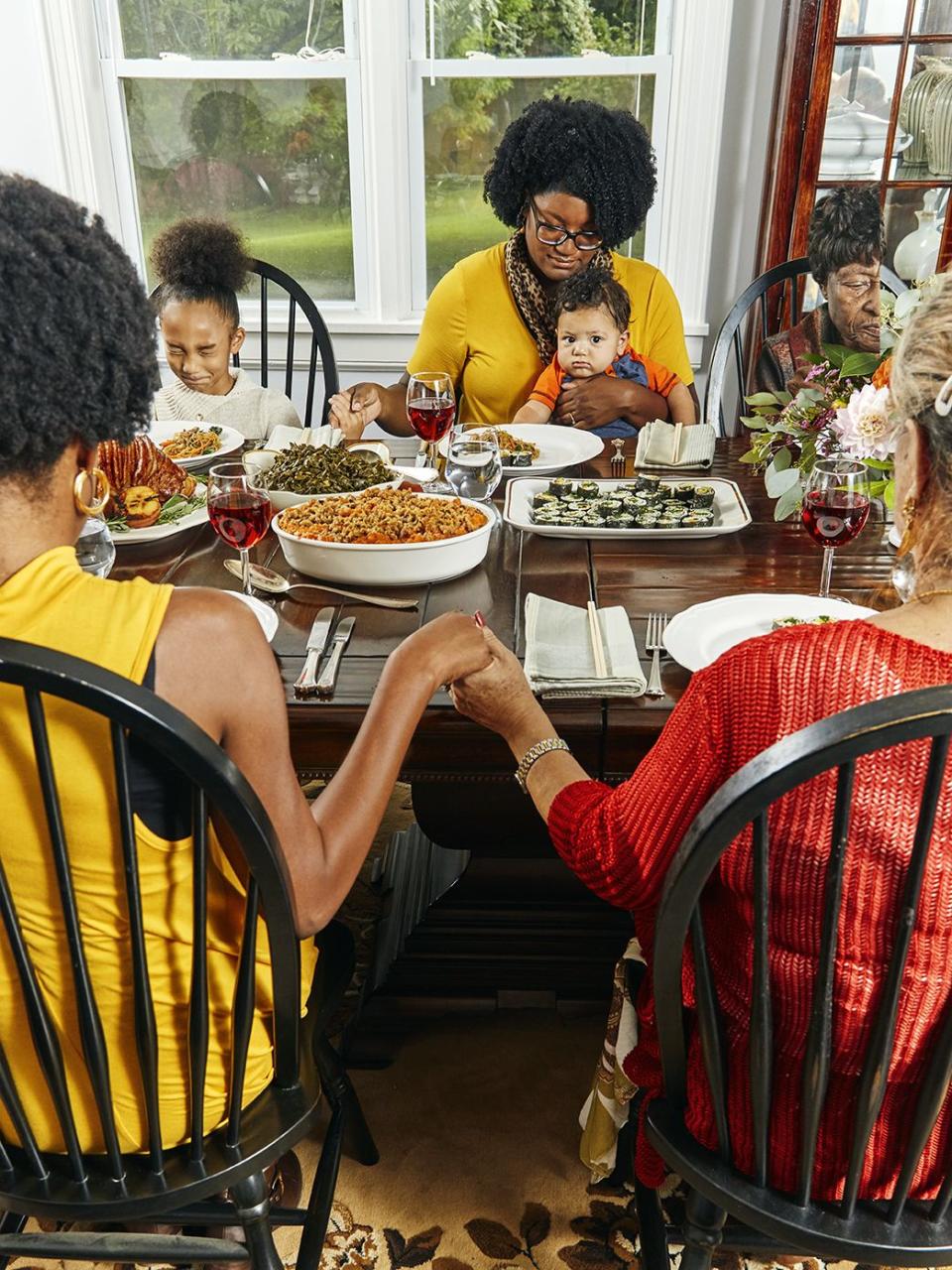
Korean fare and ocean backdrops aren’t typically associated with Thanksgiving, but for self-described army brat Theresa Amaker and her husband, James, sides of kimchi and post-dinner beach walks have been staples in the most traditional holiday meals they’ve ever had.
Theresa, 32, a digital marketing manager, and James, 38, an Army National Guard soldier on deployment, both moved around a lot growing up. Theresa spent ages eight to 10 and 14 to 17 in Germany, where her father, now a retired army sergeant, was stationed. And James, whose dad was also a military man, spent about half his childhood in Japan and the other in North Carolina, where he eventually met Theresa in college. Throughout their childhoods, an extended-family gathering was a logistical challenge. “I think we saw my maternal grandmother once every two and a half years, between moves,” Theresa says.
Theresa and James now live near Charlotte with their children, 7-year-old Jasmine and 9-month-old Jackson, and have spent the past six Thanksgivings at James’s parents’ timeshare in Myrtle Beach, South Carolina. “As a kid, I didn’t really have the normalcy of an annual family tradition, and now I’m experiencing it for the first time through my children’s eyes,” Theresa says.
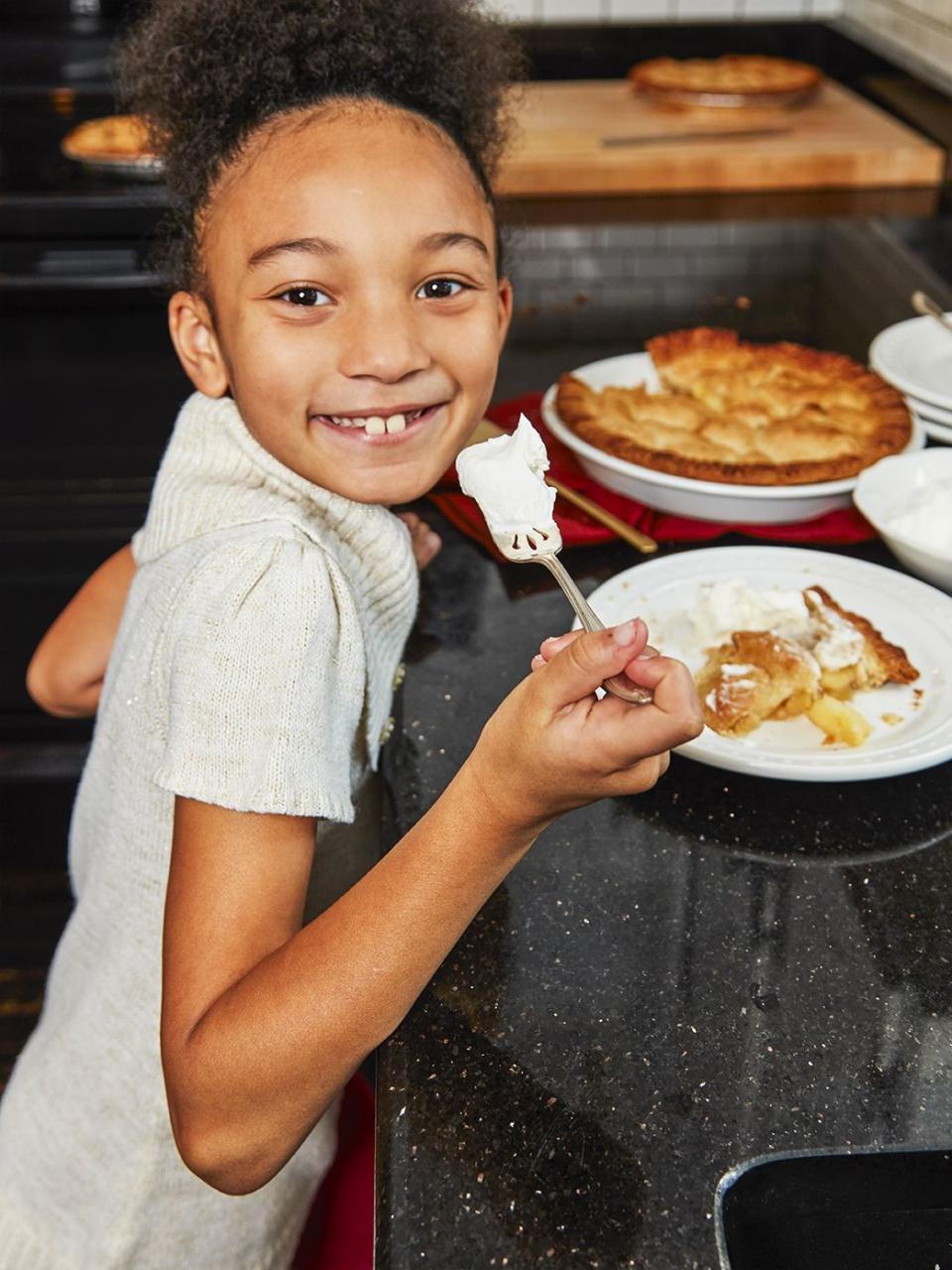
The guest list and menu vary, but dinner is incomplete without specialties from James’s Korean American mom, Betty. “I didn’t eat much Korean food before we got together, but now it’s probably half my diet,” Theresa says.
One must-have on the Thanksgiving table is Betty’s kimbap, a Korean sushi roll stuffed with scrambled egg, vegetables, and ham. Another holiday favorite: her kimchi.
The fermented cabbage gets its umami kick from salted shrimp and its heat from hot pepper flakes, a pungent combo that got Theresa through her pregnancies. “It was the only thing I could eat!” she says.
Japchae—clear potato-starch noodles studded with onion and carrot, and topped with sliced beef and soy sauce—is also a dish close to Theresa’s heart. “I love seeing my grandmother, who used to eat only American food, request it,” she says.
James won’t get his fill of japchae until he returns from his year long stint in Kuwait. In the meantime, his wife’s care packages—stocked with seaweed snacks and sweet sticky rice—will have to do. As for Theresa, the memory of her favorite Thanksgiving, five years ago, keeps her heart full.
“It was the last time my parents were there before my dad had his stroke,” she says. “We didn’t cook much; we just sat around eating, playing dice, and chilling out in the hot tub.” For many Americans, it’s hard to imagine a Thanksgiving without basting and baking, but for Theresa and James, togetherness trumps turkey any month of the year.
At This Affair, There’s More Than Enough Food—and Friendship—to Go Around
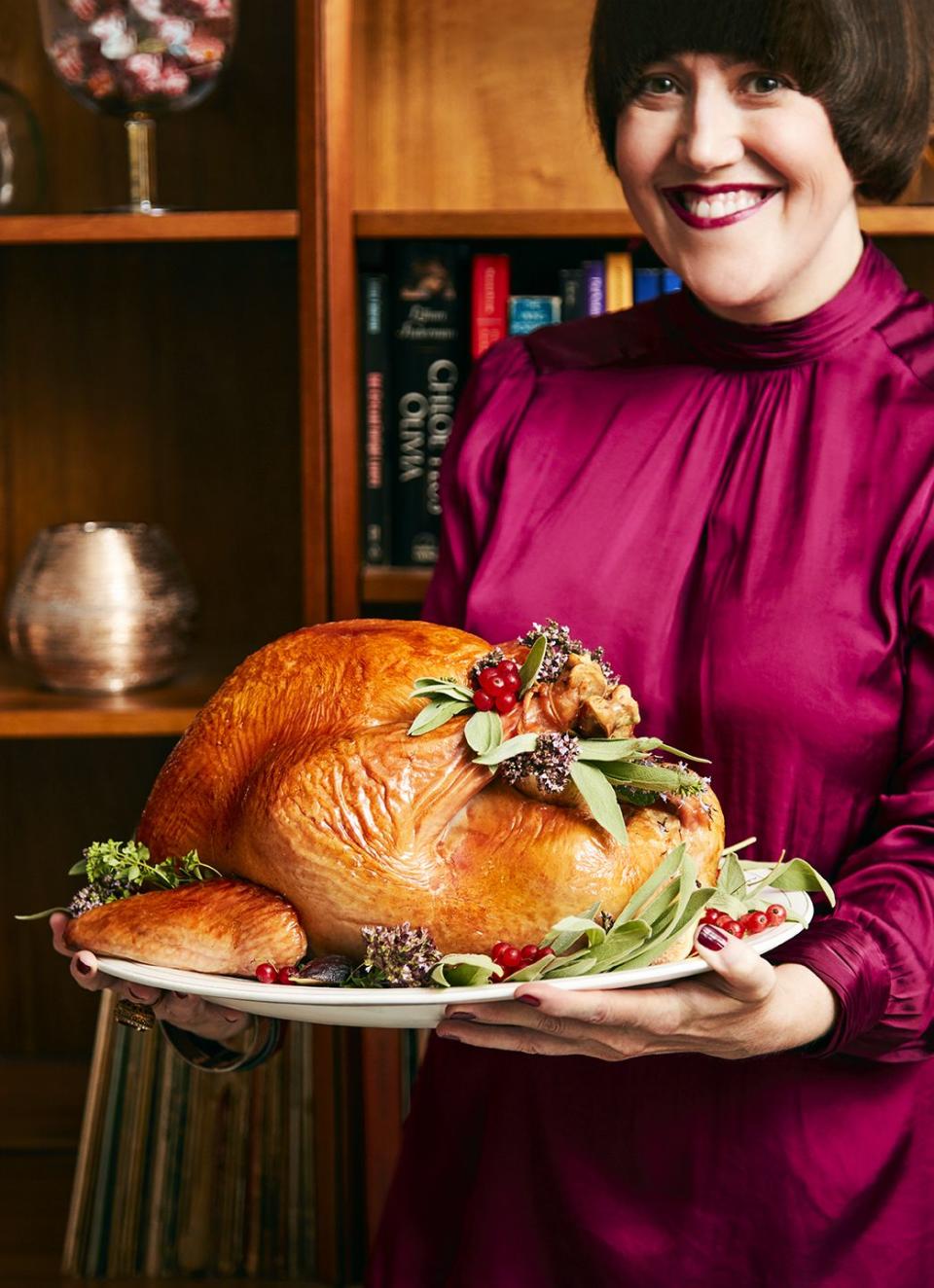
Self-employed real estate broker Molly Caldwell’s annual Friendsgiving dinner—which she hosts with her former girlfriend, Maureen Catbagan, in the Brooklyn townhouse they co-own and share—started with a predicament: How could they spend Thanksgiving Day table-hopping to other people’s meals, but still stock their own refrigerator with favorite holiday foods? “Maureen and I always got invited to plenty of Thanksgivings,” says Molly, 47. “The problem was, I wanted leftovers!”
Maureen, a multimedia artist, agreed that next-day eats—cold pumpkin pie for breakfast, turkey sandwiches smeared with cranberry sauce —were non-negotiable. So she and Molly devised a plan: They’d throw a dinner party on Thanksgiving Eve, be free the next day to visit their loved ones, and come home to plenty of sweets and sides.
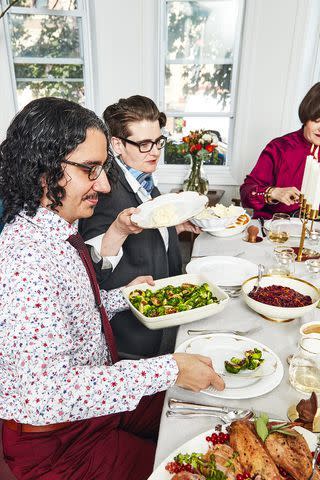
The pair hosted their first Friendsgiving in 2011, when they lived in a cozy one-bedroom apartment in a building full of pals who happily pulled up chairs to Molly’s makeshift dinner table, a red 1950s dinette paired with a card table and covered with a white sheet.
Now a rotating cast of roughly 12 fills the seats—including a filmmaker, a flight attendant, and a model turned farmer—but the pillars of the feast remain constant: a from-scratch spread and formal table settings. “Proper dinners are rare these days,” Molly says. “I love to cook, and I want the meal to say to our wonderful friends, ‘You’re important to us.’”
On the table: The sheet has been replaced by a linen cloth; there are also sparkly gold napkin rings, chocolate turkeys, and plenty of glassware and candles. The menu aims to be special, too. Molly’s much-requested baked mushrooms are stuffed with a golden blend of bread crumbs, bacon, and Romano cheese. And her cranberry sauce is infused with warm cinnamon and cloves, zested orange peel, and star anise. Another elevated classic: pumpkin pie, which she tops with candied-ginger whipped cream.
These days, the evening begins around 5:30 with wine and appetizers on the brownstone’s lower floor before the group moves upstairs for dinner. Once the plates are cleared, it’s back downstairs for dessert, board games, and karaoke, which tends to end in a sing-along of either Bonnie Tyler’s “Total Eclipse of the Heart” or Céline Dion’s “It’s All Coming Back to Me Now.”
One guest who never attended the Friendsgiving in person but will always be there in spirit is Molly’s aunt, Meg Miller, who died last year. As Meg battled ovarian cancer, she turned to poetry for solace; in her final year, she sent her niece a poem called “Perhaps the World Ends Here,” by Joy Harjo,which Molly has come to think of as the embodiment of her Friendsgiving. The last lines: “At this table we sing with joy, with sorrow. We pray of suffering and remorse. We give thanks. / Perhaps the world will end at the kitchen table, while we are laughing and crying, eating of the last sweet bite.”
A Cuban American Family Savors the Good Life...Including Flan
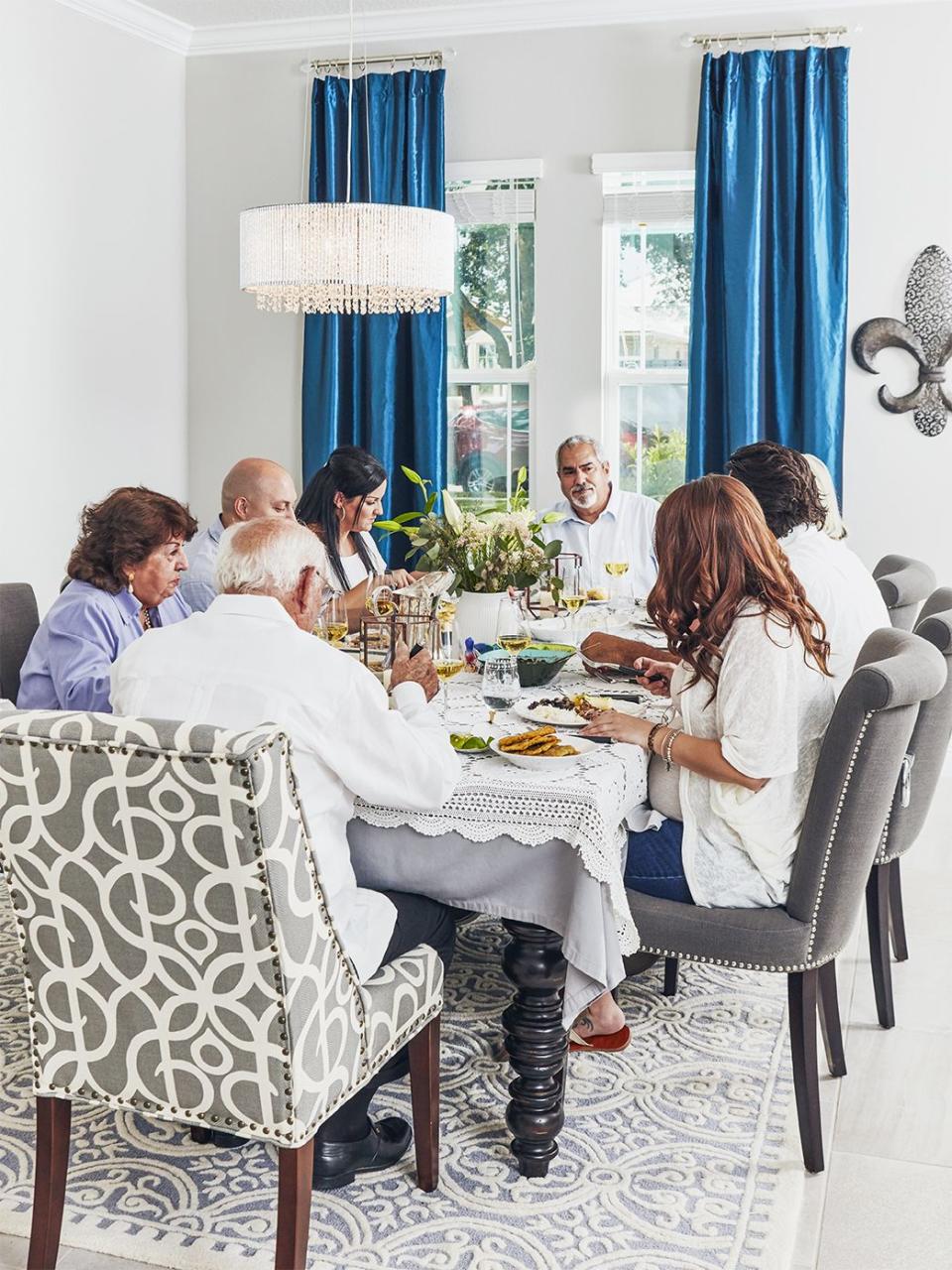
As Cubans, Marta and Ramon Cobielles had never celebrated Thanksgiving—but they were eager to embrace the tradition after they fled to the U.S. in 1971 to escape Fidel Castro’s dictatorship.
“They gathered up my mother, who was 11 at the time, and her siblings, and came over here with nothing,” says their granddaughter Mindy Fewless, 33, a food blogger and mom to 6-year-old Chloe and 3-year-old Ashton.
The family landed in Lakeland, Florida, and since cooking helped Marta keep their culture alive Stateside, Thanksgiving wasn’t a hard sell. “Any excuse for us Cubans to get together and eat, we’ll take it,” says Mindy. “My husband isn’t Cuban, so he doesn’t always get it. He’s like, ‘Do we have to have a party for Flag Day?’”

The Cobielleses’ first Thanksgiving was intimate: just them, Ramon’s brother Vicente (who had sponsored the clan to come to America), and his family. But Marta and Ramon have since helped more relatives emigrate from Cuba, and their kids eventually had children of their own—so now Mindy’s parents, Martha and Roger Curbelo, often host up to 30 people in their four-bedroom home 30 miles outside Orlando.
Turkey and pumpkin and pecan pies typically make the menu—47 years in America will have that effect—but there’s never a shortage of Cuban cuisine. Tender chunks of the starchy root vegetable yuca dressed in garlicky mojo sauce are a satisfying alternative to mashed potatoes and gravy. And making Mindy’s great-grandmother’s black beans is a necessity; the legumes are soaked overnight before being simmered with aromatic ingredients like yellow onion and green pepper, and then served over fluffy white rice.“It’s the way Cuban black beans should taste,” says Mindy. “They have a ton of flavor from the veggies and spices, and they’re soft without being mushy.”
Alongside the pies, you’ll always find flan. The Cuban treat is often prepared in a pressure cooker, which makes it extra dense. But Mindy’s paternal grandmother’s recipe is baked in the oven the old-fashioned way, resulting in an airy cloud of vanilla custard that begs for its coating of gooey caramel sauce.
Thanksgiving dinner never starts before 5 p.m.—a schedule that lends itself to an evening after-party that’s as full of Cuban flavor as the food. Following the meal, the group moves to the poolside lanai to dance to salsa hits, sip mojitos, and play dominoes.
As cigar smoke wafts through the night air and four generations move to the beat, Marta, now 77, remains acutely aware of the true meaning of the holiday: gratitude. “Freedom is taken for granted unless you’ve had it taken from you,” she says. “This is why not only this holiday but everything we have in this country is so special to us.” Now that’s the Thanksgiving spirit.

